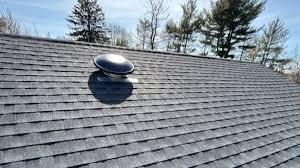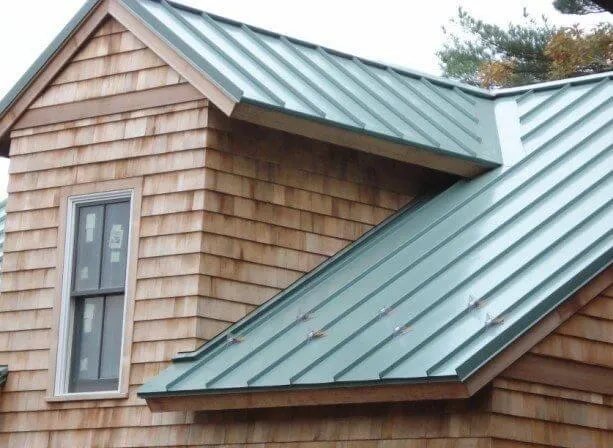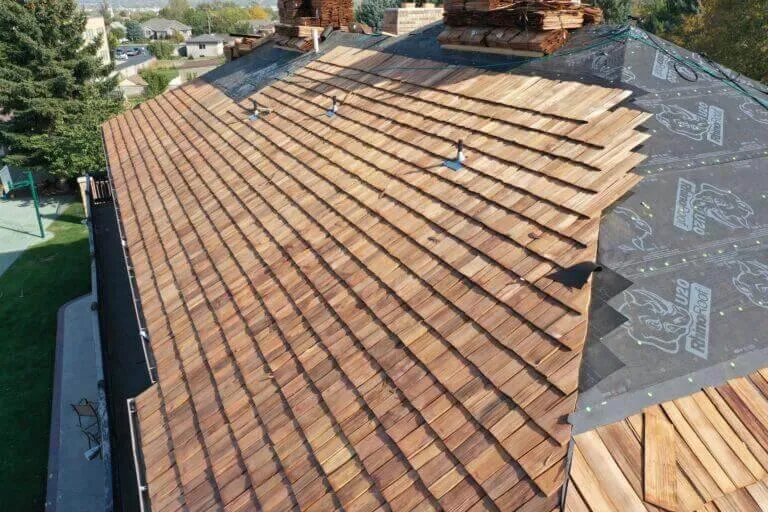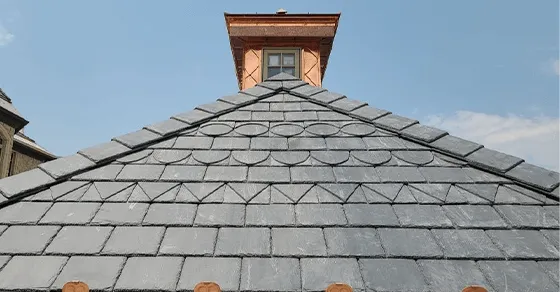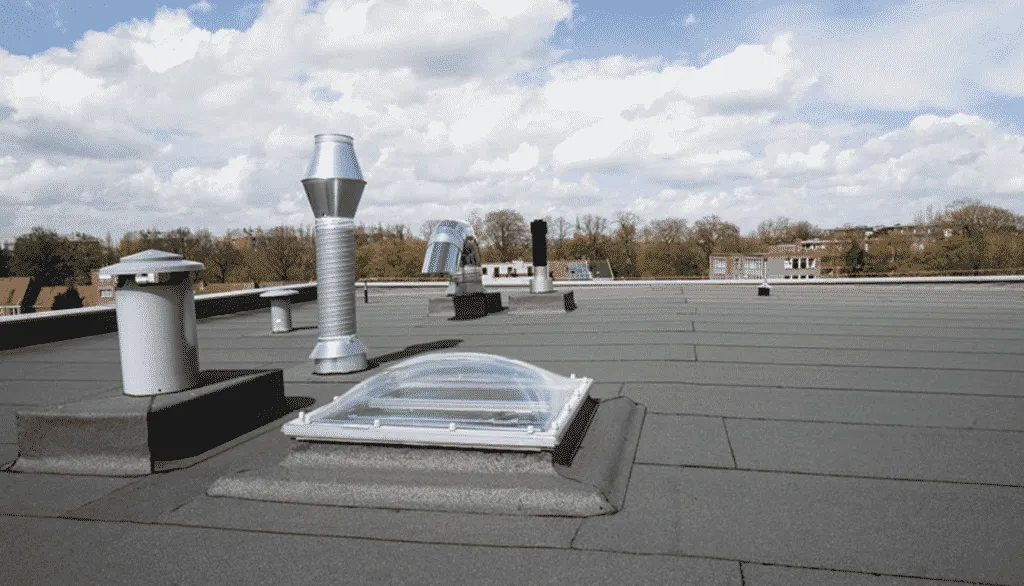Tile Roof Installation Carmichael
Tile Roof Installation Carmichael
If you're considering a tile roof installation in Carmichael, you're in for a treat. Tile roofs are not only beautiful but also durable and energy-efficient. This guide will walk you through the essential steps of installation, what to look for in a contractor, and how to maintain your new roof for years to come. Let’s dive into the details to ensure your project goes smoothly.
Key Takeaways
Tile roofs offer great durability and aesthetic appeal.
Choosing a qualified local contractor can make a big difference.
Proper preparation is key before starting the installation process.
Follow best practices for tile placement to avoid future issues.
Regular maintenance helps extend the life of your tile roof.
Understanding Tile Roof Installation Carmichael
Benefits of Tile Roofing
Tile roofs are a popular choice in Carmichael, and for good reason. They offer a unique blend of durability and aesthetic appeal. One of the biggest advantages is their lifespan; tile roofs can last for decades, often outperforming asphalt shingles.
Here's a quick rundown of the benefits:
Longevity: As mentioned, tile roofs can last 50 years or more with proper care.
Fire Resistance: Tile is naturally fire-resistant, providing an extra layer of protection for your home.
Energy Efficiency: Tile reflects sunlight, helping to keep your home cooler in the summer and potentially lowering energy bills.
Aesthetics: Tile roofs come in a variety of styles and colors, adding curb appeal to your home.
Common Tile Materials
When it comes to tile roofing, you have several material options to choose from. The most common are clay and concrete, but there are also slate and composite tiles available. Each material has its own set of pros and cons.
Clay Tiles: Classic and durable, clay tiles offer a timeless look. They are known for their resistance to fading and their ability to withstand harsh weather conditions. However, they can be more expensive than other options.
Concrete Tiles: A more affordable alternative to clay, concrete tiles can mimic the look of clay or slate. They are also very durable and come in a wide range of colors and styles. Roof replacement is a big decision, so consider all options.
Slate Tiles: A premium roofing material, slate is incredibly durable and can last for over a century. It's also naturally fire-resistant and adds a touch of elegance to any home. However, slate is one of the most expensive roofing materials.
Composite Tiles: Made from a blend of recycled materials, composite tiles are an eco-friendly option. They are lightweight, durable, and come in a variety of styles.
Climate Considerations for Tile Roofs
Carmichael's climate plays a significant role in choosing the right roofing material. The hot, dry summers and mild, wet winters can impact the performance of your roof. Tile roofs are generally well-suited to this climate, but there are a few things to keep in mind.
Heat Resistance: Tile's reflective properties help keep your home cooler during the summer months. This can reduce your reliance on air conditioning and lower your energy bills.
Water Resistance: While tile is generally water-resistant, it's important to ensure proper installation to prevent leaks. The underlayment beneath the tiles is crucial for protecting your home from water damage.
Freeze-Thaw Cycle: Although Carmichael doesn't experience extreme cold, occasional freezing temperatures can still affect tile roofs. Choose tiles that are specifically designed to withstand freeze-thaw cycles to prevent cracking and damage.
It's important to consult with a qualified roofing contractor to determine the best type of tile for your home and climate. They can assess your specific needs and recommend the most suitable material and installation techniques.
Choosing the Right Roofing Contractor

Finding the right contractor for your tile roof installation is super important. It can be the difference between a roof that lasts for decades and one that starts leaking after a couple of years. It's not just about getting the job done; it's about getting it done right. Let's break down what to look for.
Qualities of a Reliable Contractor
When you're looking for a roofing contractor, there are a few key things to keep in mind. First off, you want someone with a solid reputation. Check online reviews and ask for references. A good contractor should be licensed and insured – this protects you if something goes wrong during the job. Experience is also key; look for a contractor who has worked with tile roofs specifically, as the installation process can be different from other roofing materials. Finally, make sure they have good communication skills. You want someone who can explain the process clearly and answer all your questions.
Questions to Ask Potential Contractors
Before you hire anyone, it's a good idea to ask a bunch of questions. Here are a few to get you started:
Can you provide proof of insurance and licensing?
How long have you been installing tile roofs?
Do you offer a warranty on your work? What does it cover?
Can I see examples of your previous tile roofing projects?
What is your plan for handling unexpected issues during installation?
Don't be afraid to ask for clarification if something doesn't make sense. A good contractor will be happy to explain everything in detail. Getting roof inspection and assessment is a great first step.
Importance of Local Expertise
Hiring a contractor with local expertise is a big plus. They'll be familiar with Carmichael's specific building codes and weather patterns, which can affect the installation process. Local contractors also have established relationships with suppliers, which can help with material costs and availability. Plus, they're more likely to be invested in the community and committed to providing quality work. It's always good to support local businesses, especially when it comes to something as important as your roof. It's important to consider local weather conditions when choosing a contractor.
Preparation for Tile Roof Installation

Before diving into the actual tile roof installation, there's some prep work that's really important. Think of it like prepping a canvas before painting – you wouldn't just start slapping paint on a dirty, uneven surface, right? Same goes for your roof. Getting these steps right can save you a ton of headaches later on.
Site Inspection and Assessment
First things first, you gotta take a good, hard look at what you're working with. This isn't just a quick glance; it's about getting down and dirty (well, maybe not literally dirty) to see what's going on up there. A thorough inspection helps identify any existing problems that need fixing before you even think about laying down new tiles.
Check for any signs of water damage, like stains or leaks.
Inspect the roof decking for rot or weakness.
Make sure the structure can handle the weight of tile – tile roofs are heavier than asphalt shingles, so this is important.
Removing Old Roofing Materials
Out with the old, in with the new! This step involves carefully removing whatever's currently on your roof. Whether it's old shingles, worn-out tiles, or something else entirely, it all needs to go. Be careful during this process; you don't want to damage the underlying structure. Also, think about disposal – you'll need a plan for getting rid of all that old roofing material. A roof inspection is a good idea before you start.
Wear appropriate safety gear, like gloves and eye protection.
Use the right tools for the job – a roofing shovel can be a lifesaver.
Be mindful of falling debris – rope off the area below if necessary.
Necessary Repairs Before Installation
Once the old roofing is gone, you'll probably find some things that need fixing. This is your chance to address any structural issues, repair damaged decking, and make sure everything is solid and ready for the new tile. Ignoring these repairs is like building a house on a shaky foundation – it might look good at first, but it won't last.
Replace any rotted or damaged decking.
Repair or reinforce any weak spots in the roof structure.
Ensure proper ventilation to prevent moisture buildup.
Taking the time to properly prepare your roof before installing tile is an investment in the long-term health and durability of your home. It might seem like a lot of work upfront, but it'll pay off in the end with a beautiful, long-lasting tile roof that protects your home for years to come.
The Tile Roof Installation Process
So, you're ready to get a tile roof installed? Awesome! It's a process, but definitely worth it for the long haul. Here's a breakdown of what to expect:
Step-by-Step Installation Guide
Okay, let's get into the nitty-gritty. Here's a simplified version of how a tile roof goes on:
Underlayment Installation: This is your roof's first line of defense. It's a water-resistant barrier installed directly onto the roof deck. Think of it as a raincoat for your roof. Making sure this is done right is super important.
Batten Installation: These wooden strips are attached to the underlayment. The tiles will sit on these, creating an air gap. This gap helps with ventilation and prevents moisture buildup.
Tile Placement: Now for the fun part! The tiles are carefully placed, starting from the bottom and working upwards. They're usually nailed or clipped into the battens. Proper alignment is key for both looks and function.
Finishing Touches: Ridge tiles and hip tiles are installed to seal the roof's edges. Flashing is added around chimneys, vents, and walls to prevent leaks. It's all about the details!
Best Practices for Tile Placement
Tile placement isn't just slapping tiles on the roof. There's a bit of an art to it. Here are some things the pros do:
Staggering Joints: Just like bricklaying, staggering the joints between tiles makes the roof stronger and more water-resistant.
Proper Overlap: Each tile needs to overlap the one below it by the correct amount. This prevents water from seeping through.
Secure Fastening: Tiles need to be securely fastened to the battens. This prevents them from sliding or blowing off in high winds. You can find quality roofing systems that meet the highest standards.
Ensuring Proper Ventilation
Ventilation is a big deal for tile roofs. Without it, moisture can build up, leading to rot and other problems. Here's how it's handled:
Ridge Vents: These vents are installed at the peak of the roof, allowing hot, moist air to escape.
Soffit Vents: These vents are located under the eaves, allowing cool, fresh air to enter the attic.
Air Gap: The space between the tiles and the roof deck (created by the battens) allows air to circulate freely.
Proper ventilation is not just about keeping your attic cool in the summer. It's also about preventing ice dams in the winter and extending the life of your roof. It's a year-round thing.
Getting the installation right is crucial for the longevity of your tile roof. Don't skimp on this step!
Post-Installation Care and Maintenance
Okay, so you've got your beautiful new tile roof installed. Awesome! But the job's not quite done. Think of it like a car – you can't just drive it off the lot and forget about it. You need to keep up with maintenance to keep it running smoothly (or, in this case, keep your house dry and protected). Here's the lowdown on keeping your tile roof in tip-top shape.
Regular Inspection Tips
Alright, so how often should you actually be looking at your roof? Honestly, at least twice a year is a good rule of thumb. Spring and fall are ideal times, before and after the really harsh weather hits. But also, after any major storm, it's worth taking a peek. Here's what to look for:
Cracked or broken tiles: Obvious, but important. Even a small crack can let water in.
Missing tiles: High winds can sometimes dislodge tiles. Roof Inspection and Maintenance is key to catching these issues early.
Debris buildup: Leaves, branches, and other junk can trap moisture and cause problems.
Sagging areas: This could indicate a more serious structural issue.
Check the flashing: Make sure the metal around chimneys, vents, and skylights is still in good shape.
Cleaning and Maintenance Guidelines
So, you've spotted some gunk on your roof. What now? Here's how to keep things clean without causing damage:
Gentle cleaning: Use a soft brush or broom to remove loose debris. A garden hose with a gentle spray nozzle can also help.
Avoid pressure washers: Seriously, just don't. The high pressure can damage the tiles.
Moss and algae removal: If you've got moss or algae, you can use a specialized roof cleaner. Make sure it's designed for tile roofs and follow the instructions carefully.
Trim overhanging branches: Keep trees trimmed back to prevent leaves and branches from falling on the roof.
It's a good idea to get a professional roof cleaning every few years. They have the right equipment and know-how to clean your roof safely and effectively. Plus, they can spot potential problems that you might miss.
Signs of Potential Issues
Okay, so what are the red flags that mean you need to call a pro? Here are a few things to watch out for:
Leaks: This is the big one. If you see water stains on your ceiling, or water dripping from anywhere, call a roofer ASAP.
Granules in the gutters: If you have asphalt shingles underneath the tiles (as part of the underlayment), excessive granule loss can be a sign of wear and tear.
Buckling or curling tiles: This can indicate that the tiles are deteriorating.
Significant moss or algae growth: While a little bit is normal, a lot can damage the tiles and shorten their lifespan. Promptly address any issues to prevent further damage.
Tile roofs are pretty durable, but they're not invincible. Regular roof repairs and maintenance will help keep your roof in good shape for years to come.
Cost Factors in Tile Roof Installation
Material Costs and Options
Tile roofing presents a wide range of material choices, each impacting the overall cost. Clay tiles, known for their longevity and classic appearance, often come with a higher price tag than concrete tiles, which offer a more budget-friendly alternative. Slate tiles, prized for their durability and unique aesthetic, typically represent the most expensive option. The size, shape, and color of the tiles also influence the material cost. For example, larger tiles might reduce labor costs but increase material expenses due to handling and potential breakage. Don't forget to factor in the cost of underlayment, flashing, and other essential roofing components.
Labor Costs in Carmichael
Labor costs in Carmichael can vary significantly depending on the roofing contractor you choose and the complexity of the installation. Experienced contractors with specialized knowledge of tile roofing may charge more, but their expertise can prevent costly mistakes down the line. Factors influencing labor costs include the roof's pitch, size, and accessibility. A steep roof or one with many angles will require more time and effort, increasing labor expenses. Be sure to get multiple quotes and carefully review what each estimate includes. It's also important to check the contractor's licensing and insurance to ensure you're protected in case of accidents or damage.
Budgeting for Unexpected Expenses
When planning a tile roof installation, it's wise to set aside a contingency fund for unexpected expenses. These can arise from unforeseen issues such as hidden damage to the roof deck, the need for additional structural support, or delays caused by weather. Aim to allocate at least 10-15% of your total budget for these contingencies. This will help you avoid financial strain if unexpected problems occur during the installation process. Also, remember that removing old roofing materials can sometimes reveal underlying issues that require immediate attention, adding to the overall cost.
It's easy to underestimate the total cost of a tile roof installation. Make sure to get a detailed estimate from your contractor, and don't be afraid to ask questions about any line items you don't understand. A clear understanding of the costs involved will help you make informed decisions and avoid surprises down the road.
Here's a simple breakdown of potential unexpected costs:
Roof deck repairs
Additional underlayment
Flashing replacements
Structural reinforcements
Common Mistakes to Avoid
Overlooking Local Building Codes
One of the biggest mistakes you can make is ignoring the Carmichael building codes. Seriously, don't do it. These codes aren't just suggestions; they're in place for a reason. They ensure safety and structural integrity. Failing to comply can lead to fines, project delays, or even having to redo the entire installation. Always check with the local building department before starting any roofing project. It's a pain, but it's way less of a pain than dealing with the consequences later.
Ignoring Weather Conditions
Trying to install a tile roof during the rainy season? Bad idea. Extreme heat? Also, a bad idea. Weather plays a huge role in how well your tile roof will hold up. Tile can become slippery when wet, making installation dangerous. High temperatures can affect the setting of adhesives and underlayment. Always check the forecast and plan your installation for a period of stable, moderate weather.
Choosing Inappropriate Materials
Not all tiles are created equal. Using the wrong type of tile for your roof's pitch or the local climate is a recipe for disaster. For example, a heavier tile might be too much for an older roof structure to handle. Similarly, some tiles are more susceptible to damage from freezing temperatures.
Make sure you consult with your roofing contractor to select materials that are appropriate for your specific situation. Don't just go for the cheapest option; consider the long-term costs of potential repairs and replacements.
Here's a quick rundown of things to consider:
Tile Weight: Ensure your roof structure can support the chosen tile.
Climate Suitability: Select tiles that can withstand local weather conditions.
Aesthetic Compatibility: Choose tiles that complement your home's style.
Wrapping It Up
So, there you have it! Installing a tile roof in Carmichael doesn’t have to be a headache. With the right planning and a solid team, you can get a roof that not only looks great but also stands the test of time. Remember to take your time choosing materials and don’t hesitate to ask questions during the process. Whether you’re going for a classic look or something more modern, there’s a tile option out there for you. And if you ever feel overwhelmed, just reach out to the pros. They’re there to help you every step of the way. Happy roofing!
Frequently Asked Questions
What are the benefits of choosing a tile roof?
Tile roofs are durable, energy-efficient, and can last a long time. They also come in many styles and colors, making them a great choice for any home.
What types of materials are used for tile roofing?
Common materials for tile roofs include clay, concrete, and slate. Each type has its own benefits and looks.
How does the climate in Carmichael affect tile roofs?
Carmichael has a warm climate, which is great for tile roofs. They can handle heat well and help keep your home cool.
What should I look for in a roofing contractor?
A good contractor should be experienced, reliable, and have positive reviews. It's also important they know local building codes.
What steps are involved in the tile roof installation process?
The installation includes site inspection, removing old materials, making repairs, and then carefully placing the new tiles.
How can I maintain my tile roof after installation?
Regularly check for broken tiles, clean gutters, and have inspections to catch any issues early.

Contact Us To Get A Free Quote!
Roofing We Install In Carmichael


